Art of Making the Most of the Ugliest
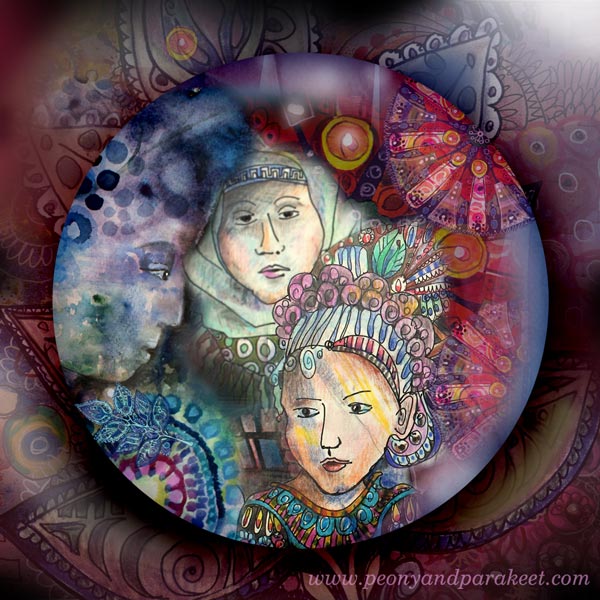
This is a surprising video story about a continuous creative journey and about the art of making. If you are interested in reusing your art or creating digital art from your handmade pieces, this video is especially for you. (You might have seen some of the work shown here if you have liked Peony and Parakeet at Facebook.)
From Quilting to Digital Art – A Video
Let me be your mentor in art: Subscribe to my weekly emails!
Could Needlework Define Drawing?
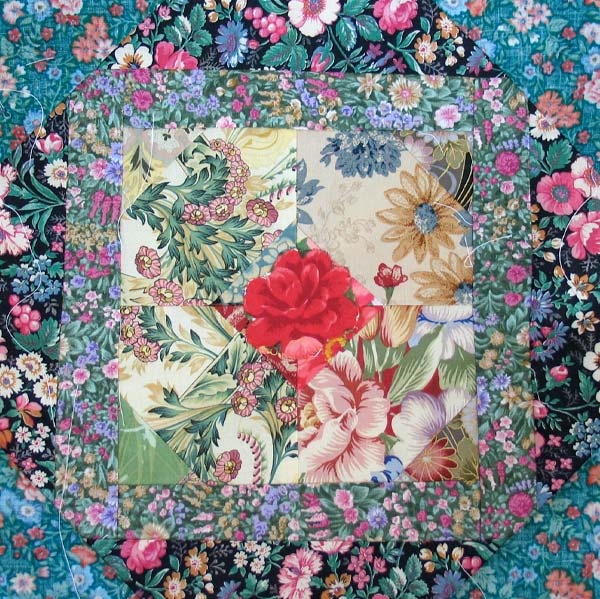
Over 20 years ago, when studying computer science, control engineering, and automotive engineering, I got used to being the only girl in many lectures. But it was not only that. Whatever book I read, whatever formula I learned, it was all written by men. Soon, it felt natural. The field of technology was ruled by men.

When I think about drawing, I see the same thing. Throughout the history, the skill of drawing has been defined by men. Many say that if you draw 3-dimensional and photorealistic images, you can draw.
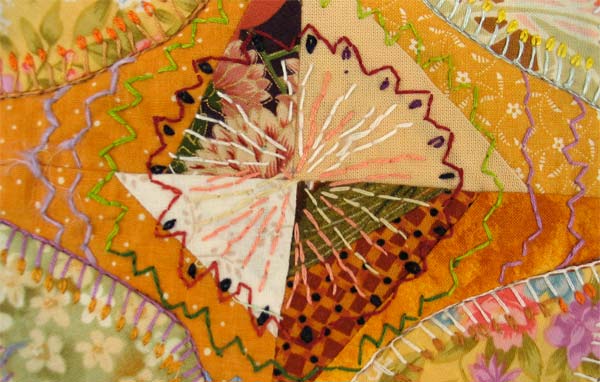
But could needlework define the way we draw? Could we think more about textures, structures, and shapes than the actual dimensions? Could we tell stories where we travel inside rather than outside?
I don’t say men can’t do all that. My message is that too many women who are experienced quilters, seamstresses, needleworkers feel that they are far away from drawing.
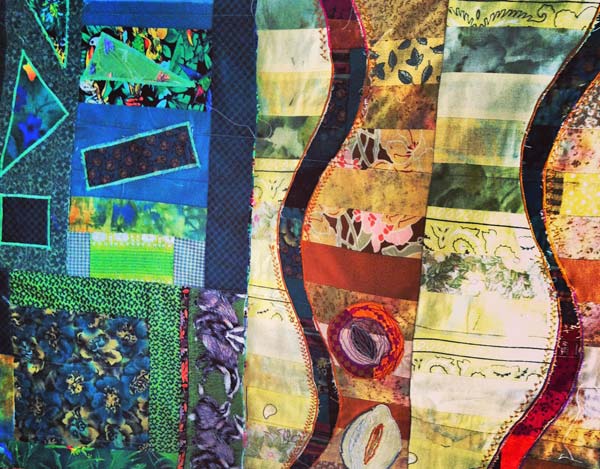
Why Draw?
When you hold the pen instead of the needle, you are able to experiment in much less time. With a little bit of guidance, your imagination will start to grow. You will be able to see your creativity in a new light!
My quilting and embroidery got a friend from art journaling when I began to draw.

There’s no reason why needlework could not define the way we draw. Or at least be our inspiration when we draw.
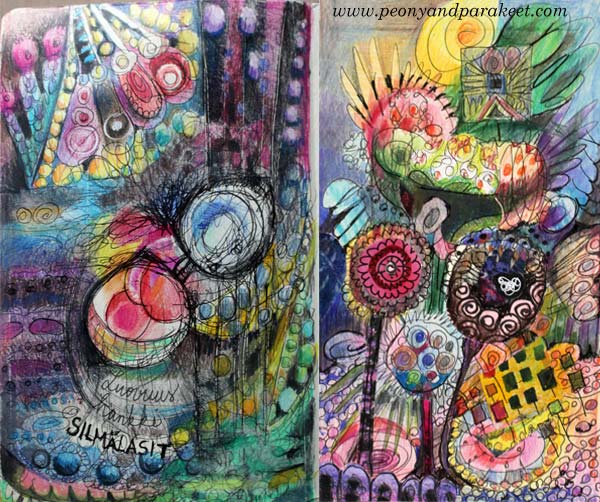
Let me be your art teacher: Subscribe to my weekly emails!
From Decorative to Expressive Art
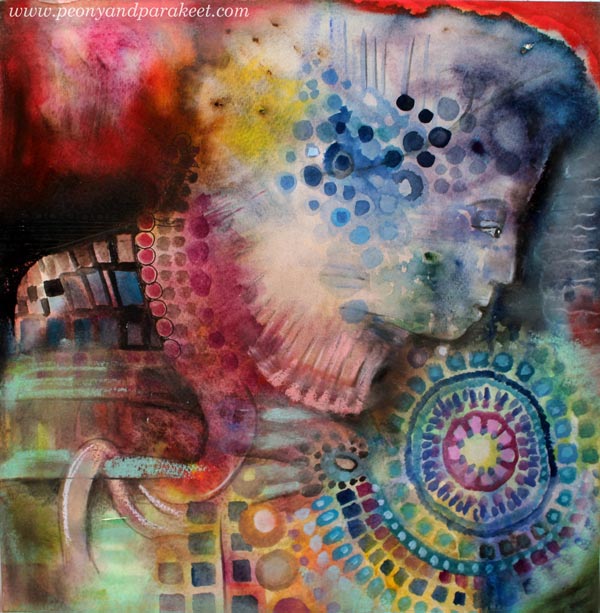
Last Friday, I traveled two hours by train to a yarn shop at Tampere. Not just to purchase new yarn, but to meet a famous knitting pattern designer Stephen West who had been invited to Finland. While I was attending his workshop, I was excited by the knits he showed and the stories he told. There were silent moments. We, Finnish women, counted stitches and pondered about what we heard. We Finnish can look very serious, quiet and occupied, even if we are about to burst with excitement. Stephen put it kindly: “Finnish carry themselves well.” That introvert attitude is also visible in this recent mixed media artwork, “Self-Portrait as a Knitter”. The person’s focus is so much on details that the inspiration, the yellow spot in the back of the head, doesn’t have room to show up.
From Over-Decorative to Expressive-Decorative
Sometimes similar kind of thing happens when we create art: the inspiration does not show in the result. There can be so much decoration going on, that not much room is left for the expression. We cover the background with little motifs and surface patterns, instead of enhancing what’s already there.

I admit it’s fun and fulfilling to work with thin brushes, pens, and pencils. Making a circle after a circle is like knitting a shawl, stitch by stitch.
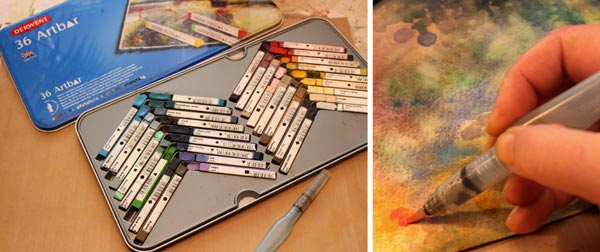
However, it’s good to add a little more variety and contrasts so that the expression comes through. It’s like changing the yarn or needle size once in a while!
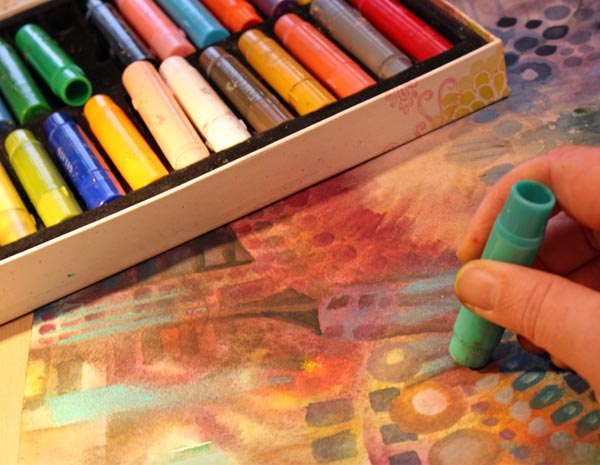
And like in handknits, just when you think your work is ruined, you need to calm down and do the finishing.

When knitting, you sew the seams, iron everything carefully and add the final balancing details.

When creating art, you bring up the most important details and connect the dots so that everything falls into its place.
You Can Create Both Expressive and Decorative Art
Sometimes there are debates whether decorative art can be expressive as well. But you can be both decorative and expressive. You can give meaning to your motifs. You can let motifs be pieces of a puzzle instead of covering everything evenly.
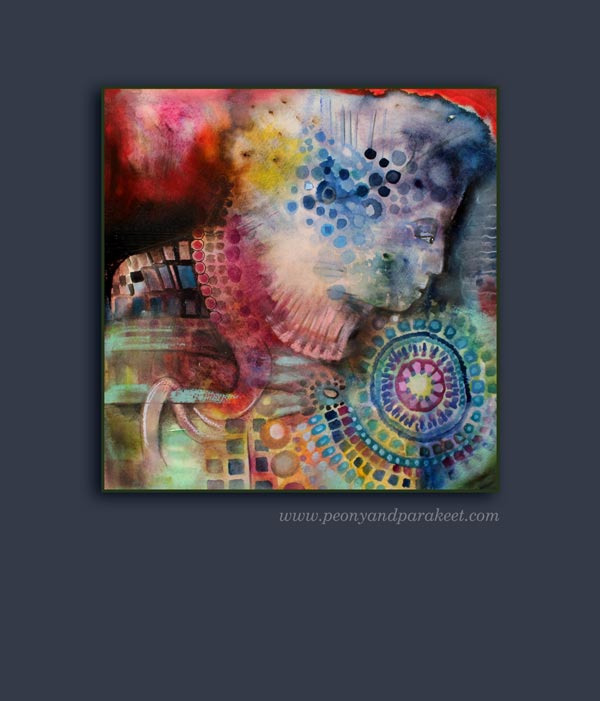
More decorative-expressive art with watercolors: Watercolor 101 for Intuitive Painting
If you are a knitter, check this out too: Folk Bag Workbook
Let Unconventional Inspire You

You know I love beautiful and decorative things. But the more I create, the more I feel that creating art should be expression first, aesthetics second. This watercolor collage is called “Leftright Wrongright” and it is about how sometimes the old wrong and unconventional can be the new right.
Rubber Stamp Art
If you think of experimental and avant-garde, would you ever consider using rubber stamps? In that context, they are the most boring thing. They are the absolutely wrong choice when you want to create unique and advanced art. But as my mission was to express how wrong can be right, I just could not resist taking the risk and using them! I painted the background with watercolors and then started stamping.
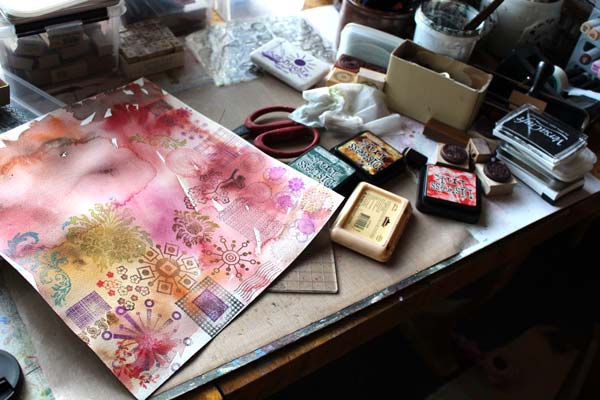
I only stamped once with each of the stamps. That way they were seen as individuals, not as a bunch of clones. I have used this principal before too, see Can Rubber Stamping be Art and Make Samplers to Save Bits and Pieces.
Watercolors
Watercolors are my trusted friend. They make the best backgrounds but also, they make rubber stamps look much more interesting. After the whole background was covered with stamped images, all different from each other, I added water and brushed the water-based ink to blend with watercolors.

With the big brush, I doodled this and that thinking fierce fully about destruction and bravery.
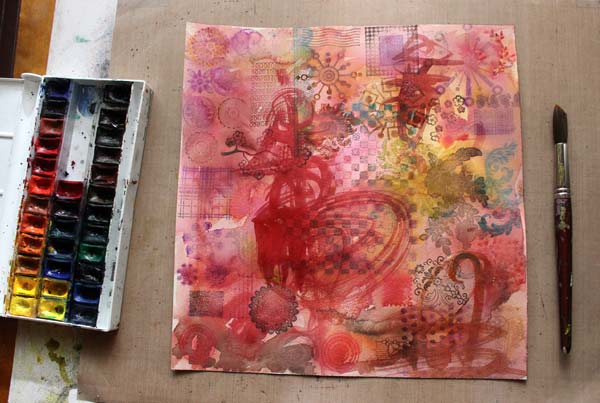
With a smaller brush, I added details and enhanced them with colored pencils.
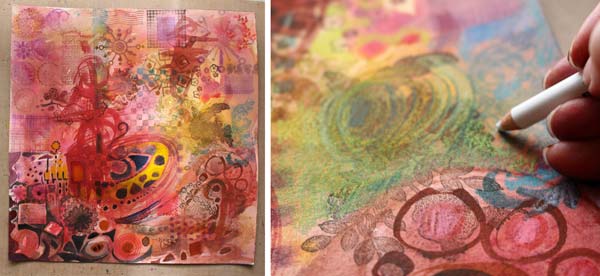
Imitating Rubber Stamps
To make the stamped images even more individual, I added hand drawing to make few of them bigger and more handmade. A thin drawing pen is great for imitating rubber stamps that have delicate details.
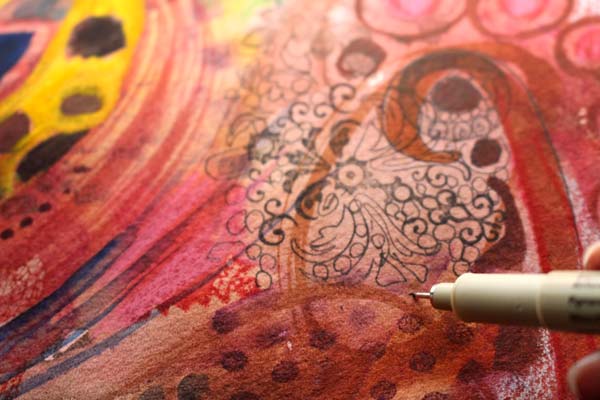
Finishing
When I worked with this artwork, it became clear to me that the final touches are crucial here. I should not only do what I usually do but add something that is against the rules, disrespectful even. First, I doodled with a white gel pen and let the doodling look a bit dreadful. Then, I grabbed a piece of paper, painted red and yellow with heavy acrylic paint. The unsophisticated color and the clumsiness of the shapes when I cut it made it look so wrong.
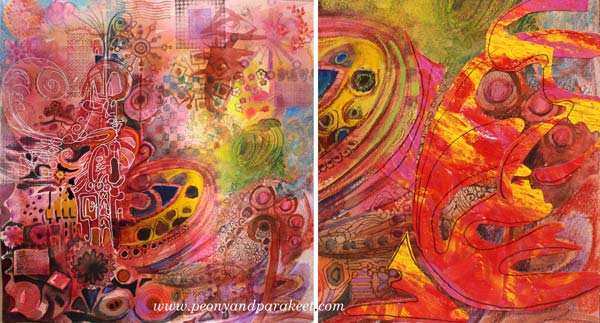
But I finished this artwork with a new attitude. As I wanted to express that sometimes we need to do things that make us feel uncomfortable, I needed to break my ordinary rules. I added few rough elements without over-decorating them. They are the wrong that makes the right spin. They make me ask: do right and wrong exist at all when creating art? If we think that unconventional is wrong, are we denying the true power of art and where it can take us?

Hopefully, this inspires you to add something wrong to your art, and make it right!
Let me be your art teacher: Subscribe to my weekly emails!